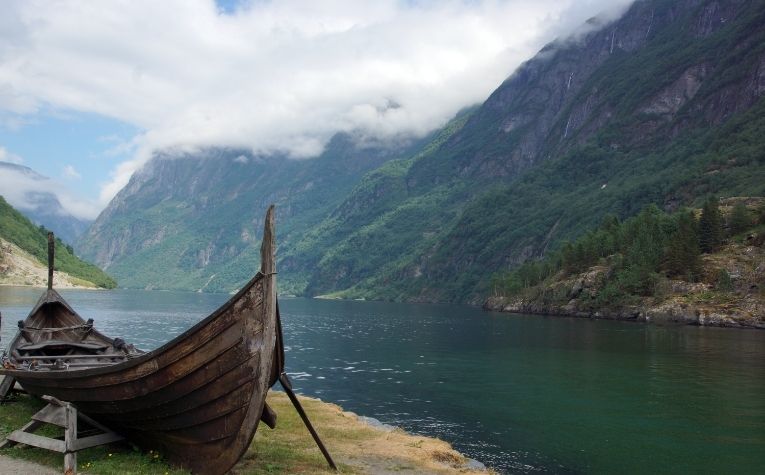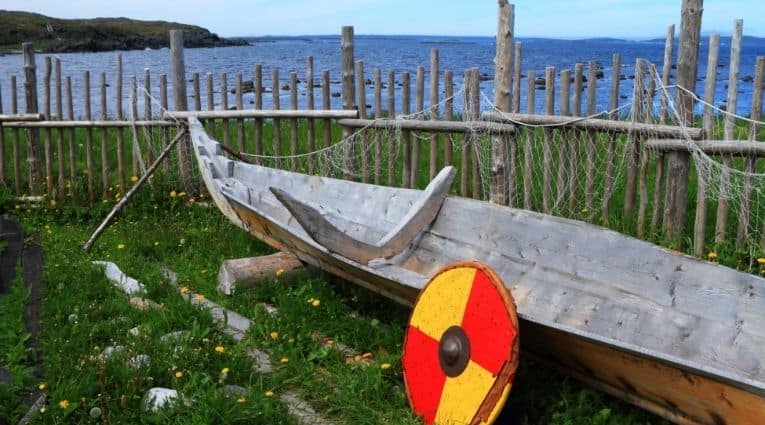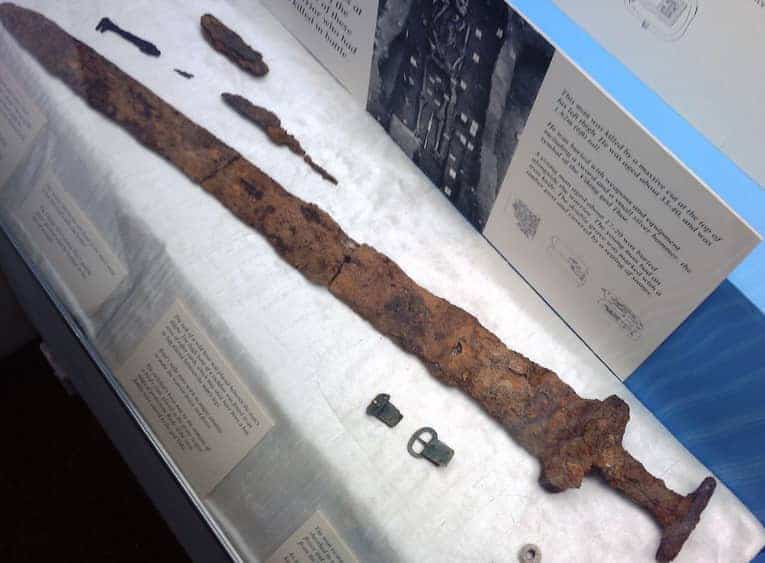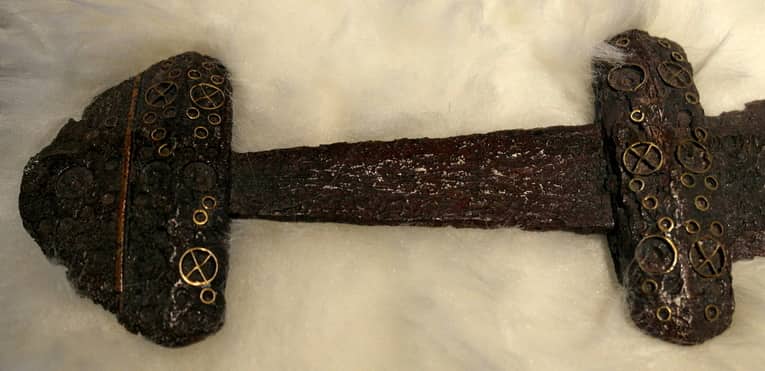In so many ways, the Vikings were larger than life figures who lived during the Middle Ages, but whose legacy thrives today.
Norse symbols are as popular in the modern era as they were during the Viking Age.
There are aspects of their culture and lifestyle experiencing a resurgence, including the Vikings’ traditions concerning their dead and ensuring that they prospered in the afterlife.
There is still interest in Viking funerals in the 21st century, but their feasibility depends on which version is desired.
The Hollywood movie-style Viking funeral with the deceased placed on the deck of a longboat set out to sea and set ablaze is fiction, then and now.
Funerals that are true to the Viking spirit, however, can still happen even today.
Like so many people across Europe during the Middle Ages, the Vikings lived difficult lives, and life expectancy was far less than modern standards.

It was a foregone conclusion for Viking warriors that they would never achieve a long length of years in the human realm.
But this was something that they looked upon favorably since to die an honorable death meant spending the afterlife in Valhalla.
Ever wonder what the Vikings looked like? Are modern depictions of Vikings accurate? See The Viking Dress Code: What They Wore and How to learn more.
How Did the Vikings Hold Their Funerals?

The bearded chieftain was dressed in his finest clothing and laid to rest on the deck of his dragon ship, his battle gear arranged all around him. His trusted sword was placed in his hands, the blade gleaming in the sunlight as the vessel was pushed off for its final voyage.
The archers raised their bows and unleashed their fiery arrows, which found their marks, and soon, the entire ship was engulfed in flames.
Is this an accurately reconstructed Viking funeral scene based on archaeological findings and historical records? Hardly.
Is this a modern-day interpretation based loosely on Viking traditions with creative license and cinema magic thrown in? Definitely.
While befitting a decorated chieftain and certainly god-pleasing, Viking longboats fully ablaze, majestically floating off into the sunset likely did not happen.
There Were Two Types of Viking Funerals

While the Hollywood version is a sure-fire crowd pleaser and ratings winner, what is certain is that there were two types of Viking funerals.
Both were prominent in Norse culture, and they had the same objective: to ensure that the deceased would travel safely to the afterlife and, once there, prosper in a way that was not possible on earth.
In the case of warriors, the goal was to reach Valhalla.
The two types of Viking funerals were cremations and burials:
- Cremation – The Vikings held firm beliefs relating to the afterlife, and one of these was that the smoke from a funeral pyre would carry the deceased’s soul to the afterlife as they rose from the flames. For this reason, many Vikings (mainly before they started converting to Christianity) were cremated at death, with the ashes often buried in an urn or similar vessel.
The funeral pyres used by the Vikings would have been built in such a way as to generate tremendous and sustained heat. In other words, they were huge.
Modern crematories process bodies using heat ranging from 1,400 to 1,800 degrees Fahrenheit (760 to 980 degrees Celsius), and it is maintained for a minimum of one and up to three hours to reduce the remains to ash and bone.
For this reason, it is highly unlikely that the Vikings set longboats ablaze to cremate chieftains and the like.
The extreme temperature and time needed could not have been achieved by burning a boat (floating on the water, no less).
Furthermore, boats were expensive and laborious to build, so surely, the Vikings would not have wasted such valuable resources.
- Burial – Aside from cremating their dead, the Vikings also buried them (including cremated remains contained in urns). Burials were either shallow graves dug in the ground or mounds of dirt heaped upon the body. In Scandinavia, where harsh, cold winters are common, frozen dirt in the ground would likely have prevented the digging of graves, hence the use of mounds.
The Vikings believed that their dead would exist in the afterlife as they did on earth, and thus grave goods were an essential aspect of Viking funerals.
These burial items would include weapons, jewelry, clothing, and other things that indicated the deceased’s social status and standing in the community.
Warriors were buried with their weapons, shields, and armor.
Do fictional accounts of Ragnar Lodbrok reflect his real life? See Ragnar Lodbrok: Separating Fact from Fiction to learn more.
The Role of Longboats in Viking Funerals

Much has been made of the importance of longboats in Norse society, and the association between the Vikings and their longboats is influential.
After all, this relationship gave rise to the notion of floating infernos carrying the Viking dead to eternity.
In reality, Viking funerals involved longboats in several ways:
- Just as Viking ships transported people in life, so too were they believed to provide passage after death. Burial mounds were often shaped to resemble ships, with large stones or small boulders arranged in such a way as to form the outline of a longboat’s hull.
- Prominent chieftains and Viking leaders were sometimes buried with their ships. In such rare instances, the body and the grave goods were loaded onto the vessel, and the entire ship was buried in the ground. As can be imagined, such a laborious ceremony would have been an enormous undertaking and was therefore reserved for an exclusive group of Vikings.
It should be noted, however, that such funerals were not limited to male Vikings.
The famous Oseberg ship was determined to contain two women’s remains, presumably holding very high positions in their community.
The impressive vessel measured 70 feet long, 17 feet wide, and would easily have accommodated 30 passengers. [1] [2]
Here’s How Modern Viking Funerals Could Happen
Not only is it likely from scientific and technical perspectives that burning ship funerals are pure fiction, but in the modern era, such send-offs for the dearly departed are almost certainly bound to be illegal on some level.
For instance, laws prohibit the disposal of bodies at sea, and there are also local regulations relating to intentionally setting a vessel on fire and abandoning it in a body of water.
Cremation, however, is a common practice around the world.
While it may occur in a crematory instead of a magnificent funeral pyre (more on this later), it still allows some aspects of a traditional Viking funeral to occur.
First and foremost, reducing a body to ashes is how the Vikings honored their dead before the spread of Christianity throughout Scandinavia.
Scattering ashes at sea would capture the same spirit as the Viking notion of sending the dead on their final voyage to eternity.
Similarly, burying ashes in an urn with grave goods, or even in a casket or vessel in the shape of a longboat, would closely mimic the true-to-life practices of Vikings many centuries ago.
Following other ceremonial aspects like feasting to honor the dead would further add to the authenticity. [3]
The Vikings were excellent seafarers. A big key to their success was their longboats. See Here’s Why Vikings Used Longboats to learn more.
Is It Possible to Have a Funeral Pyre?
One of the most powerful aspects of funerals during the Viking Age was cremating the body on top of a magnificent pyre.
In 2019, the Missouri General Assembly (the state’s legislature) passed legislation that paved the way for legalizing outdoor cremations.
The so-called “Jedi Disposal Act” would allow licensed funeral directors to stage modified funeral pyres outdoors under certain conditions.
This first-of-its-kind state law would make cremation ceremonies in a natural setting legal for those seeking to depart the mortal realm in the same manner as the Vikings, certain Native American tribes, or for that matter, Jedi knights. [4]
Final Thoughts
While modern Viking funeral practices may not involve ships set aflame, they capture the spirit of Viking traditions in a way that the Norse gods would approve.
References:
[1] history.com
[2] cremation resource
[3] Life in Norway: Funeral Guide
[4] The Kansas City Star
